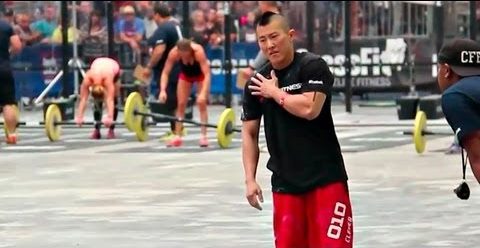
Sports injuries can be a significant setback, especially when your active lifestyle is a big part of who you are. But don’t worry, proper recovery is within your reach. Here, this post delves into some key steps you need to follow to bounce back from sports injuries. By taking a proactive approach, you can emerge stronger and ready to retake the field healthily and safely. Let’s get started.
Seek a Medical Specialist
Engaging the services of a medical specialist is a critical step in recovering from sports injuries. The experts working at Dominguez Injury Centers can explain how a specialist such as a physiotherapist or orthopedic surgeon can provide an accurate diagnosis, which is crucial in determining the right treatment plan. They use sophisticated diagnostic tools, such as MRI or ultrasound, to assess the extent of the injury. The specialist can then recommend appropriate treatments, which may include physical therapy, medication, or surgery.
These treatments are designed to alleviate pain, restore function, and prevent the recurrence of the injury. Additionally, they guide the correct form and techniques to avoid future injuries. A medical specialist also helps manage the psychological aspects of injury recovery by providing reassurance and setting realistic expectations. This comprehensive approach ensures a safe, effective, and lasting recovery from sports injuries.
Rest and Protect the Injured Area
Resting and protecting the injured area is another crucial step in the recovery process. After a sports injury, the body initiates a natural healing process. Resting allows this process to occur without further damage or strain to the injured tissues. Concurrently, protecting the injury from additional harm is equally vital. Depending on the nature and severity of the injury, protection could involve using braces, slings, or casts to immobilize the area, thus preventing further injury.
Both rest and protection help to reduce swelling, prevent aggravation of the injury, and promote the body’s healing response. Remember, rushing back into activity before proper healing can lead to chronic issues and extended recovery periods. Therefore, patience, rest, and protection are key elements in the journey of recovery from sports injuries. Always consult with a medical specialist to determine the appropriate amount and type of rest and protection for your specific injury.
Ice, Compression, Elevation
Applying ice to the injured area is a proven method for reducing swelling and relieving pain. Ice causes vasoconstriction, which minimizes blood flow to the area, thereby decreasing inflammation and swelling. It also helps numb the area, providing immediate pain relief.
Compression works synergistically with ice to control swelling. By wrapping the affected area with a bandage or specialized compression wrap, you can compress the tissues and prevent fluid build-up. Compression additionally provides support to the injured area, reducing strain on damaged tissues and promoting healing.
Elevation, the final component of this trio, involves positioning the injured part above the level of the heart. This posture aids in reducing swelling by using gravity to encourage the drainage of excess fluid from the injured area. Together, the ICE’ approach can significantly aid in the recovery process from sports injuries.
Follow a Rehab Program
Every sports injury comes with its own set of steps for an effective rehab program. These are usually the following:
- Assessment and diagnosis
- Rest and protection
- Pain management
- Range of motion exercises
- Strength training
- Balance and proprioception training
- Cardiovascular conditioning
- Functional training
- Flexibility training
- Education and injury prevention
- Progressive loading and return-to-play plan
- Monitoring and adjustment
A rehab program is designed to restore strength, flexibility, and balance to the injured area, reducing the risk of re-injury. It starts with pain management and range of motion exercises to initiate the healing process. Gradually, strength and balance training are introduced to rebuild muscle and improve coordination.
Cardiovascular conditioning maintains overall fitness, while functional and flexibility training enhances movement and prevents future injuries. Education on injury prevention is also a crucial part of the process. Each stage is carefully monitored and adjusted to ensure safe, effective recovery.
Pain Management
Pain management is a pivotal part of recovering from sports injuries. It not only provides immediate relief from discomfort but also facilitates the body’s natural healing process. Pain can restrict movement, impeding physical therapy exercises that are essential for recovery. Effective pain management, through medication or holistic approaches, can enhance mobility, allowing for the effective execution of rehab exercises.
Additionally, chronic pain can have adverse psychological effects, such as anxiety or depression, which can further delay recovery. A well-managed pain control strategy can therefore improve the mental well-being of the patient, fostering a positive mindset that is conducive to recovery. It’s important to consult with a medical professional to devise a personalized pain management plan.
Nutrition and Hydration
Consuming nutrient-rich foods helps replenish essential vitamins and minerals that your body utilizes to repair damaged tissues and reduce inflammation. For instance, protein supports muscle repair while foods rich in vitamin C and zinc promote wound healing. Omega-3 fatty acids, found in fish and flaxseeds, can help manage inflammation.
Moreover, staying well-hydrated is crucial for maintaining cellular function and aiding in nutrient transportation. Dehydration can delay the healing process and increase the risk of further injury. Therefore, optimal nutrition and hydration can significantly expedite the recovery process, equipping your body with the necessary resources for healing.
Gradual Return to Activity
This step-by-step approach prevents the risk of re-injury or exacerbation of the existing injury. It’s like retraining your body, allowing it to adjust and adapt to the demands of physical exertion again. Starting with light exercises, you can progressively increase the intensity and duration based on your comfort and ability.
This not only helps restore physical function, strength, and flexibility but also rebuilds confidence and mental readiness for sports activities. Please remember, that each individual’s recovery timeline is unique and should be tailored to their specific needs and progress. Always consult with a healthcare professional or a physiotherapist before resuming activity to ensure a safe and effective recovery plan.
In conclusion, your journey to recover from sports injuries is not a race, it’s a marathon. By following these crucial steps – seeking medical advice, resting and protecting the injured area, applying ice and compression, following a tailored rehab program, managing your pain effectively, maintaining optimal nutrition and hydration, and gradually returning to activity – you can bounce back stronger. Remember, your body’s ability to heal is remarkable. Give it the care it needs and the time it deserves.

















Follow Us